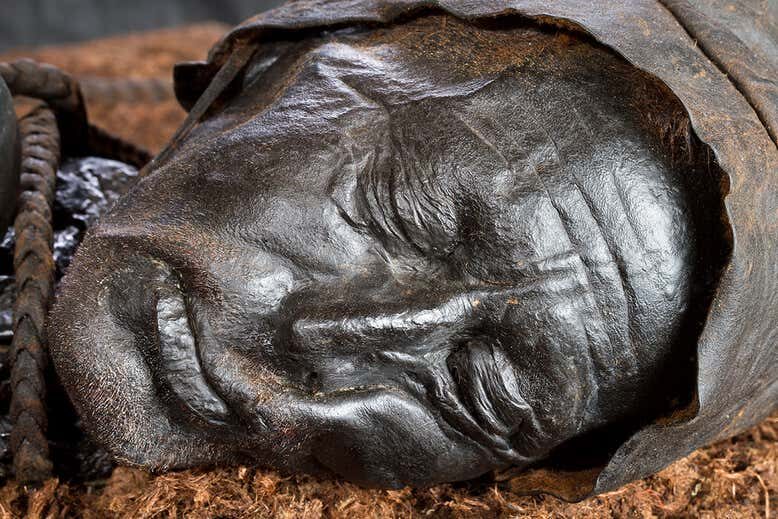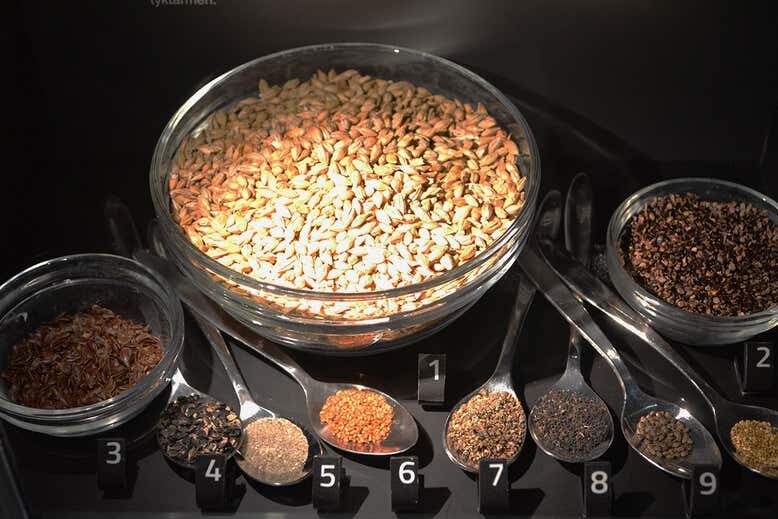Tollund Man was roughly 40 years old when he died in what is now Denmark. He was probably offered as a human sacrifice, and the peat bog he was buried in mummified his body in extraordinary detail. Dozens of other Iron Age Europeans were sacrificed in the same way, and they are collectively referred to as "bog bodies".
Danish scientists first analysed Tollund Man's intestinal contents shortly after his body was discovered in 1950. They found 20 plant species and one species of parasite.
But now Nina Helt Nielsen at Museum Silkeborg in Denmark and her colleagues have run new analyses on the contents of Tollund Man's large intestine, investigating plant fossils, pollen and - for the first time in any bog body - a full range of non-pollen microfossils, steroids and proteins.
The research revealed the presence of intestinal worm proteins and eggs - belonging to whipworm (Trichuris), tapeworm (Taenia) and mawworm (Ascaris) - as well as the man's partially digested dinner. He ate porridge made up of around 85 per cent barley, 5 per cent flax and 9 per cent seeds from a plant called pale persicaria. Food crust indicated that the porridge was slightly burned and had been cooked in a clay pot.
About 20 other species represented less than 1 per cent of the whole meal and were probably consumed accidentally. Tollund Man had also eaten a fatty-boned fish, like eel. He probably picked up the parasites from eating poorly cooked meat and drinking unclean water well before his death, says Nielsen.
As for his last meal, it was mostly ordinary for the time. "I'm pretty sure we would see something similar if we analysed the gut contents of other bog bodies," says Nielsen - although the pale persicaria seeds might have been a special addition as part of a sacrificial ritual.
At about 1350 kilocalories, Tollund Man's last meal would have provided half his daily nutritional needs - and has been preserved in such detail that "we could almost reproduce the recipe", she says.
Journal reference: Antiquity, DOI: 10.15184/aqy.2021.98





The oral traditions of our ancestors are much more trustworthy, IMHO. And they show that these people were much less "liberal" than our contemporary godless society of moral relativism.
Adulterers where drowned in the swamp.